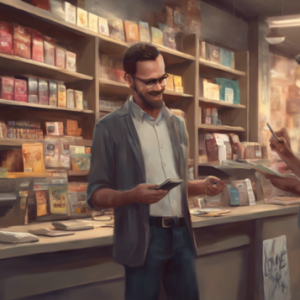Why Are Experiential Rewards Important?
Loyalty marketing is changing. While points, “spend and get”, and other rational benefits remain important components of most loyalty programs, the power of experiential rewards is transforming our approach. More and more brands offer customers memorable experiences rather than transactional perks. Since the lockdown from the global pandemic, “experiences over things” are more important now than ever to customers.
Take e-commerce giant Amazon, who offers Prime members exclusive access to music concerts and events. In 2023, the company organized a wildly successful Prime Day concert (headlined by Taylor Swift), leveraging the power of experiential rewards [1]. These strategies, where rewards go beyond monetary value, transform the customer into an eager, loyal ambassador. They position customers as active participants in the brand’s story, not just passive consumers. As a result, experiential rewards are at the forefront of loyalty program innovation and increased brand affinity.
Examples of Experiential Rewards in Today’s Competitive Market
In a competitive market, having a unique selling proposition (USP) is vital. Designing loyalty programs to offer experiential rewards can create that competitive edge and provide value to customers beyond “hard” rewards. These rewards may be the key to helping you stand out in a noisy market.
One example is MasterCard’s ‘Priceless Surprises’ initiative, which gives members once-in-a-lifetime experiences. These experiences can range from a day with Justin Timberlake to a candle-lit dinner in the caves of Cappadocia, Turkey [2]. Using this bold strategy, MasterCard dives beyond transactional value into emotional, relational value with their customers, successfully setting themselves apart in a highly competitive industry. Experiential rewards do not need to be extravagant to make an impact. Even simple, personalized experiences can foster emotional connections. Panera Bread’s loyalty program, “MyPanera,” offers customers rewards like free coffee, bakery items or even the chance to win college sports experiences based on qualifying purchases. Most of these rewards are affordable and give customers a reason to return for their favorite treats (and the chance to win an incredible experience).
Industry Strategies for Implementing Experiential Rewards
The strategic approach to implementing experiential rewards programs varies by industry. In the tech industry, for example, Google recently rolled out a loyalty program featuring exclusive digital workshops. Members can access AI Experts, Industry Tech Talks, and even coding boot camps, effectively increasing brand fidelity.
In the health space, the wellness brand ‘The Body Shop’ has adopted a ‘Love Your Body Club’ program [3]. Their members can enjoy rejuvenating yoga classes, workshops on sustainable living and access to self-care apps, providing an experiential reward well aligned with their brand ethos. This strategy increased engagement rates, boosting overall ROI. Companies should focus on experiential rewards that match their brand identity while fulfilling tangible customer needs. An experiential reward strategy can be the key to positioning your brand as unique and exciting [4].
The Impact of Experiential Rewards on Customer Retention and Loyalty
Traditional points-based and cash-back strategies must be updated, and companies are finding success using experiential rewards. The tactics used to deploy effective experiential reward campaigns in today’s world vary greatly. Here are some examples of experiential rewards you may want to consider.
Music enthusiasts could be granted access to exclusive concerts or a backstage pass as a reward. Examining the customer’s behaviors and preferences through data allows you to offer highly personalized rewards based on their past ticket purchases or listening history.
Virtual reality (VR) offers an immersive loyalty reward experience. Imagine a shopper earning VR experiences such as traveling to a virtual Paris as a reward.
Exclusive culinary events offer another exciting realm for experiential rewards. Food lovers might enjoy dinner with a renowned chef or cooking class, strengthening their rewarding experience.
We have seen brands offering exclusive movie premiers or theater tickets as experiential rewards. These experiences create lasting memories associated with the brand. In sports, we’ve seen brands offering VIP passes, access to closed training sessions or luxury box seats as experiential rewards.
Tailoring Experiential Rewards to Match Customer Preferences
Elevating customer loyalty requires understanding individual preferences. Rewards should resonate on a personal level, enhancing emotional connection. Brands are finding success by pleasantly surprising customers with attention to detail.
Businesses are curating experiences, not just simple rewards. By creating unique experiences, companies ignite emotional affinity with customers. This loyalty drives higher ROI in the long run.
Targeted, personalized experiences are the key to customer loyalty. But personalization doesn’t have to be complex. By understanding customer data and leveraging it intelligently, brands can balance automated personalization and human touchpoints.
Streaming giant Netflix does this successfully, using data to suggest personalized content. This simple act subtly creates a connection, influencing the user’s perception positively. This same approach applies to rewards programs.
Adopting this strategy engages customers and builds long-lasting relationships. Personalization in your reward programs helps differentiate you from competitors, driving long-lasting loyalty and ROI [5].
Summary: Redefining Customer Loyalty with Experiential Rewards
Experiential rewards redefine customer loyalty. They give customers memorable experiences that deepen relationships, improve loyalty and boost returns on investment.
It’s essential for brands to evolve beyond simple transactional rewards and to prioritize customer experiences. Loyalty programs should include personalized and unique experiential rewards if they want to stand out from the competition.
Experiential rewards turn routine transactions into engaging customer experiences. Businesses should shift focus to this innovative strategy to elevate customer loyalty and increase ROI.
References:
[1] Prime Day Headlined By Taylor Swift https://www.grammy.com/news/taylor-swift-headline-amazons-prime-day-concert-feat-dua-lipa-more
[2]The future of loyalty is experiential, AdAge, March 2019. https://adage.com/bestexperiential2019
[3] The Body Shop. https://www.thebodyshop.com/en-us/love-your-body-club
[4] Kumar, V. and Reinartz, W. (2012). Customer Relationship Management: Concept, Strategy and Tools. Springer, Berlin. [https://link.springer.com/book/10.1007/978-3-662-55381-7] [5] Source: Stein, A. & Ramaseshan, B. (2016). Toward the identification of customer experience touch point elements. Journal of Retailing and Consumer Services, 30, 8-19 Retrieved from: www.journals.elsevier.com/journal-of-retailing-and-consumer-services/















